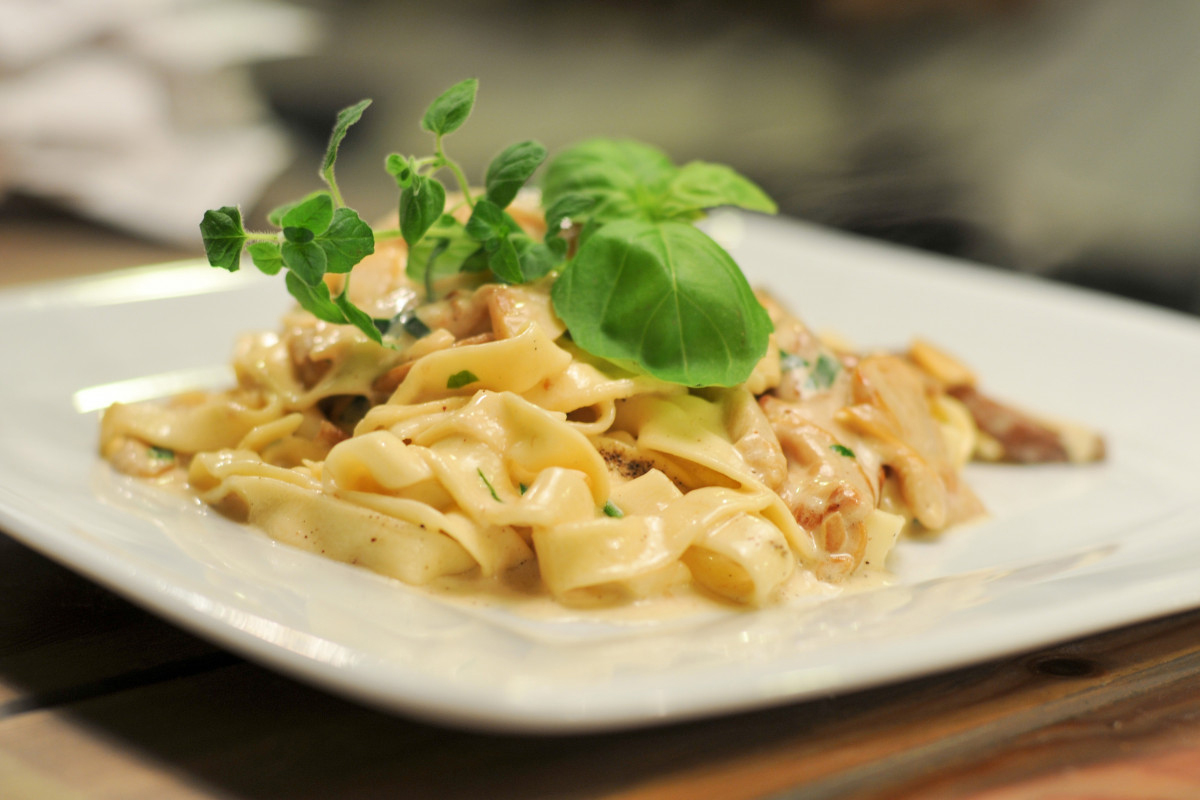Though often considered a symbol of Italian-American comfort food, Fettuccine Alfredo’s origins lie not in the bustling trattorias of New York or Chicago, but in early 20th-century Rome. It was there, in 1908, that Alfredo di Lelio, a Roman restaurateur, first stirred together a simple emulsion of butter and Parmigiano Reggiano with freshly cooked fettuccine, creating a dish that would come to define his name. As the story goes, he devised it for his wife, who had lost her appetite after giving birth. The richness and gentleness of the dish proved restorative, and soon Alfredo was serving it to diners at his small family restaurant, Alfredo alla Scrofa.
What made this otherwise unassuming combination of pasta, butter and cheese extraordinary was its theatrical presentation. Alfredo himself would toss the pasta tableside, using heavy gold forks gifted to him by Hollywood actors Mary Pickford and Douglas Fairbanks. Their visit to his restaurant in the 1920s sparked the dish’s international fame. They were so taken by the creamy ribbons of pasta that, upon returning to the United States, they shared the recipe with friends and chefs alike. Soon, Fettuccine Alfredo became a fixture on American menus – though often with a twist.
Over time, the dish evolved considerably in its adopted homeland. While the original Roman version used only butter and cheese – the emulsion forming when hot pasta met these two ingredients – the American rendition became a richer, more decadent affair. Heavy cream, garlic and even flour-based roux were introduced to create a thicker, more stable sauce. This transformation speaks not just to changing tastes, but to the broader process of culinary migration – how dishes shift and adapt as they travel.
Regional variations abound. In Italy, particularly in Rome, Alfredo’s original preparation is still regarded as a special yet straightforward expression of pasta al burro – pasta with butter. Meanwhile, in the United States, it’s often accompanied by grilled chicken, shrimp, or broccoli, turning it from a primi into a main course.
In Cyprus, Fettuccine Alfredo has found a place in Italian eateries and international hotel menus, where its creamy familiarity appeals to both locals and tourists. Though not rooted in the island’s culinary traditions, its mild, buttery richness pairs easily with the local palate, often accompanied by fresh Mediterranean vegetables or a side of village salad.







Click here to change your cookie preferences